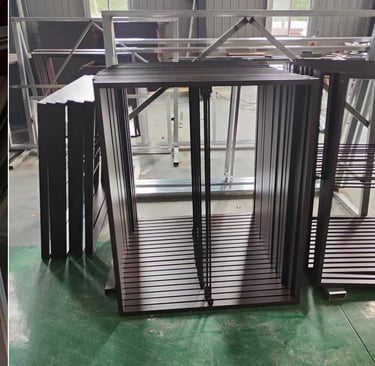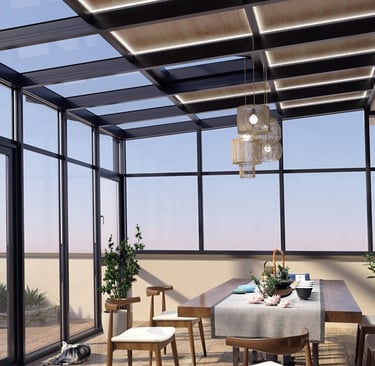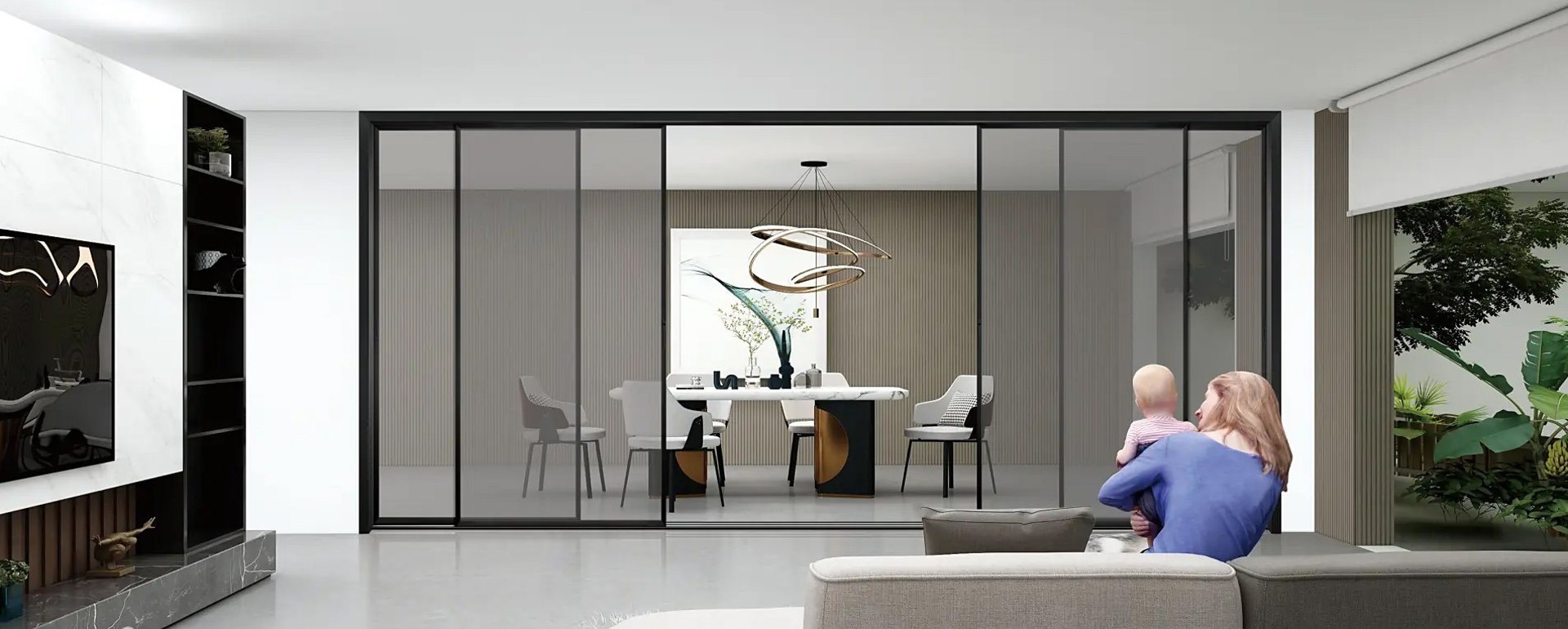The Role of Aluminum Doors and Windows in Environmental Protection for Modern Architecture
Aluminum windows and doors, with their recyclability, energy efficiency, and technological adaptability, have emerged as indispensable pillars in sustainable architecture. Future advancements in material science, smart systems, and cross-sector collaboration will further solidify their role as cornerstone solutions for achieving carbon neutrality in the built environment.
10/12/20254 min read
Introduction to Aluminum in Architecture
Aluminum has emerged as a critical material in modern architecture, offering numerous advantages that align with the demand for environmentally friendly building solutions. As architects and builders increasingly prioritize sustainability, the properties of aluminum—durability, lightweight, and recyclability—have positioned it as a favored choice in contemporary design. This section delves into the significance of aluminum as a pivotal material in architectural applications, particularly focusing on windows and doors.
Durability is one of the primary attributes of aluminum that enhances its role in modern architecture. Unlike other materials, aluminum is resistant to corrosion, making it an ideal choice for various climates. Its resilience ensures that structures maintain their aesthetic appeal over time, reducing the need for frequent replacements and thereby minimizing waste. Furthermore, the lightweight nature of aluminum supports innovative design possibilities without compromising stability. This characteristic allows architects to create sleek, modern designs that can withstand environmental stresses while promoting energy efficiency.
The recyclability of aluminum promotes its integration into sustainable architectural practices. As awareness of environmental issues grows, the desire for materials that can be repurposed effectively is paramount. Aluminum can be recycled indefinitely without any loss in quality, making it one of the most sustainable building materials available. In recent years, there has been a notable upsurge in the demand for materials that contribute to ecological preservation, further solidifying aluminum's role in the development of energy-efficient buildings.
This paper aims to explore the overarching impact aluminum doors and windows have on promoting sustainable architectural practices. By examining their properties and applications, we can better understand how aluminum contributes to environmental protection within the realm of modern architecture.
Challenges and Future Directions for Aluminum in Sustainable Architecture
The aluminum industry, while recognized for its lightweight properties and durability, faces significant challenges concerning sustainability in modern architecture. One major issue is the energy-intensive production processes traditionally associated with aluminum manufacturing. Extracting aluminum from its ore requires substantial electrical energy, often derived from non-renewable fossil fuels, resulting in a considerable carbon footprint. This poses a contradiction to the sustainability goals of modern architecture, as architects and builders aim to reduce the environmental impact of their materials.
Another challenge lies in the lifecycle management of aluminum products. Although aluminum is highly recyclable, the rate of recycling in some regions remains insufficient. Notably, this issue raises concerns over the depletion of natural resources and the environmental toll of primary aluminum production. To combat this, the industry is increasingly turning to research and development focused on optimizing recycling processes and improving the overall efficiency of aluminum product design.
Recent advancements include the exploration of cleaner production technologies and the integration of renewable energy sources in manufacturing. Companies are investigating methods such as using solar or wind energy to power smelting processes, thus reducing dependency on fossil fuels. Additionally, there is a growing interest in developing extrusions and finishes that are not only aesthetically pleasing but also environmentally friendly.
Looking ahead, the concept of a circular economy presents a promising direction for integrating aluminum into sustainable architecture. By prioritizing recyclability and reducing waste, the aluminum sector can potentially enhance its environmental credentials. The collaboration between manufacturers, architects, and researchers is crucial in this respect, driving innovation and fostering the development of eco-efficient products. As the demand for sustainable building materials continues to rise, aluminum’s future in architecture appears increasingly intertwined with advancements in sustainability practices, ensuring that it remains a valuable asset in eco-friendly construction.
Innovative Design and Technology in Aluminum Fixtures
Aluminum doors and windows have witnessed significant advancements due to innovative design and technology, enhancing both their functionality and aesthetics. One of the most impactful developments in this domain is the introduction of thermally broken aluminum systems. These systems incorporate a thermal barrier, which improves insulation by preventing heat transfer between the interior and exterior of a building. As a result, thermally broken aluminum fixtures contribute significantly to energy efficiency, reducing heating and cooling costs while promoting comfort within the living space.
In addition to thermal management, advancements in coatings and finishes have further revolutionized aluminum doors and windows. Innovative powder coatings and anodized finishes not only provide a sophisticated appearance but also enhance durability and resistance to environmental factors. These coatings can significantly increase the lifespan of aluminum fixtures, reducing the need for replacements and maintenance, thereby making them an environmentally friendly choice for modern architecture. Furthermore, these finishes are available in a wide array of colors and textures, allowing for greater design flexibility that meets the aesthetic demands of contemporary architecture.
Moreover, aluminum fixtures play a crucial role in achieving green building certifications, such as LEED (Leadership in Energy and Environmental Design). The lightweight nature of aluminum allows for a reduction in the overall material usage, while its recyclability contributes to sustainability efforts. By utilizing innovative designs and state-of-the-art technology, aluminum doors and windows not only align with eco-friendly building practices but also enhance a building's overall performance. Architectural professionals are increasingly recognizing the value of incorporating these advanced aluminum systems into their designs, which fosters a more sustainable future in construction.
Environmental Benefits of Aluminum Doors and Windows
Aluminum doors and windows stand out in modern architecture due to their significant environmental advantages. One of the primary benefits is energy efficiency. Aluminum, when integrated with thermal breaks, provides superior insulation capabilities. This characteristic helps to maintain stable indoor temperatures by reducing the transfer of heat. Buildings outfitted with energy-efficient aluminum fenestration systems consume less energy for heating and cooling, leading to decreased greenhouse gas emissions associated with energy production.
Moreover, the thermal insulation properties of aluminum also contribute to the overall reduction of a building's carbon footprint. According to various studies, buildings that utilize aluminum doors and windows can achieve a reduction in energy use by up to 30%. This statistic highlights the impact of selecting aluminum as a framing material, as it allows for a more sustainable living environment.
The recyclability of aluminum is another critical environmental benefit. Unlike many other construction materials, aluminum is infinitely recyclable without loss of quality. This trait ensures that products at the end of their life cycle can be reprocessed into new aluminum products. As per industry statistics, approximately 75% of all aluminum produced is still in use today, emphasizing its importance in minimizing waste. This recycling capability decreases the demand for new raw materials and conserves natural resources, creating a significant positive effect on the environment.
Additionally, using aluminum in the construction of doors and windows can contribute to green building certifications. Exhibiting credentials from programs like Leadership in Energy and Environmental Design (LEED) further underscores the benefits of choosing aluminum as a sustainable option. Architecturally, these elements combine aesthetic appeal with substantial sustainability, making them an ideal choice for environmentally conscious designs.







Get in Touch With Us
Partner with QTA Aluminium for wholesale and OEM door & window solutions. Contact us directly to discuss your project needs.
© 2025. All rights reserved.
